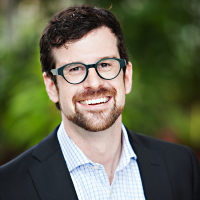5 Ways to Up Retention From Your Next Fundraising Event
One of the biggest problems that nonprofits face is donor retention. To maintain an active donor community, you need to keep your constituents participating from fundraising event to fundraising event.
You can’t count on organically reaching new donors and volunteers every time you hold an event, and it’s important to foster a lasting relationship with individuals who engage with your organization.
Luckily, stewarding donors has never been easier. Here are 5 surefire ways to up donor retention from your next fundraising event:
- Make your fundraising event memorable.
- Follow up with your guests.
- Keep good donor data.
- Target donors.
- Make your next event count.
Are you ready to start retaining more of your donors? Let’s look at each of these tips in more detail.

1. Make your fundraising event memorable.
Simply put, you won’t retain donors if you don’t make a great impression on them at your next fundraising event.
The pool of individuals likely to be active participants in your nonprofit are also likely to be involved with other philanthropic organizations. Because of this, you should consider yourself as competing for donors’ participation at your next event. If you can’t keep them interested, then you’ll lose their donation to another nonprofit.
To keep these donors coming back from event to event, you have to stand out from the crowd. Here are a few key ways to keep donors interested:
- Make sure donors enjoy themselves. If donors have fun at your events, they’ll be more likely to want to attend future fundraisers for your organization. Offer them attendance-based incentives, such as raffles or auctions. Tournaments, like trivia games or talent shows, are also fun, low-cost ways to make your event stand out.
- Make your event unique. To stay remembered by your constituents, try developing a new take on your fundraising event that’s unique to your nonprofit. A convenient way to do this is by putting a tech-savvy twist on a classic fundraiser idea by using event fundraising software like BidPal's.
- Stay on their mind (and their newsfeed). Have a professional or hobbyist photographer take pictures of your guests having fun, and then post those photos on social media afterwards. This will keep donors thinking about your organization long after the event ends, and it’s a simple way to increase awareness through their social network.

2. Follow up with your guests.
Another reason many nonprofits have a difficult time retaining constituents is due to a failure to follow up with donors after fundraisers end. To a fundraiser participant, if the nonprofit they worked with seems to stop caring about them after the event is over, they’ll be less inclined to continue to engage with the organization.
For this reason, it’s crucial to show donors that they matter to your nonprofit by extensively following up with them after every fundraising event.
Once your event has ended, there are a few low-cost gestures you can extend to your guests that will make them more likely to return for your next fundraiser:
- Saying thanks. Sending out a personal thank-you message to every event guest is one of the most valuable—yet overlooked!—tools to increase retention. Every fundraiser participant should receive a thank-you email or letter, and you should acknowledge specifically the hand they had in making your fundraiser a success.
- Showing impact. One of the best ways to keep constituents participating in your fundraisers is to show them how their contributions are being put to work. If they can see how they have helped your organization succeed, they’ll be more likely to keep working with you. You can also use this as an opportunity to show them what donations at higher levels can achieve, which may entice them to give more generously.
- Invite them again. A little while after the event, invite them to your next gathering. Don’t put any pressure on them to donate, but let them know that you’d like for them to participate. This ensures that they’re aware of the next event on your nonprofit’s calendar, and that they’re reminded they’re a valuable member of your community.
Above all, just make sure your fundraiser participants feel appreciated and necessary to your organization’s goals. If your supporters feel expendable, they’ll be less likely to continue to donate or volunteer with your nonprofit in the future.

3. Keep good donor data.
One of the biggest (and most common) mistakes nonprofits make is failing to use fundraisers as opportunities to learn more about their constituency. To a great degree, fundraising events can help your organization collect helpful data on the demographics, habits, and needs of your donors and volunteers.
Here’s an incomplete list of important data points to get you started. You try to use this data as background information for each individual donor.
- Personal information. Age, sex, marital status, religion.
- Contact information. Phone number, email address, residence address, social media profile URL.
- Location. Country, geographical region, state, city, neighborhood.
- Wealth indicators. Annual income, tax bracket, profession.
Once you’ve built up an informative library of constituency data, use what you’ve collected to inform how to move forward with your next fundraising event. Here are a couple of ways to efficiently collect constituency data during the fundraising process:
- Use every interaction as a learning opportunity. You should gather data on your donors at every level of engagement before, during, and after your fundraising event. Every time you interact with a new individual, create a profile on them in which you store their giving history, age, gender, income level, contact information, and anything else you can learn.
- Keep your data organized and streamlined. The only thing worse than being uninformed about the constituency you serve is being unable to analyze the data you collect on them. The best way to streamline constituency data is to invest in dedicated nonprofit CRM software. Make sure your choice of CRM integrates with your other fundraising software to collect the maximum amount of data possible.
Data means nothing if you don’t use it productively, so be sure to build future fundraising efforts off of a strategic analysis of this newfound knowledge.

4. Target donors.
As you continue to collect constituency data, you’ll be more able to strategically target possible donors and volunteers. The more you know about your donors, the less likely it will be for you to lose track of them.
Don’t let what you’ve learned go to waste! This is your chance to tailor your next fundraiser directly to the needs and desires of your donor base.
You might use the data you’ve collected in a couple of different ways:
- Donor engagement. You can use the data you’ll collect from your next fundraiser to learn how to best connect with potential donors. Based on demographic information, contact information, and your history of interactions with your constituents, you can craft an outreach strategy catered to each individual.
- Pattern recognition. You may also find patterns among different subsets of constituents that reveal information your community may not even know about itself. What age group is most likely to donate? What region has the highest concentration of volunteers? Is there a particular time of year you see an uptick of engagement? Use this information to your advantage in crafting future fundraising events.
By targeting constituents, you give yourself the opportunity to create the perfect fundraiser with them in mind.

5. Make your next event count.
It can be easy to fall into a routine when fundraising for your organization. Especially if you have a set style of fundraising event that your nonprofit builds itself around, you can be unconsciously perpetuating inefficient practices that do little to help foster donor retention.
Luckily, there are a number of simple ways to stop yourself from making the same mistakes event after event. Here are a couple of strategies:
- Survey your guests. An often overlooked way to learn how to put on the perfect fundraiser for your constituency is surveying your donors. Ask them directly what they want to see in your next fundraiser; you may not be able to please everyone, but you can likely cater to the majority of constituents by giving them an event they know they’ll love.
Planning your next fundraiser is the most important step you take towards retaining your donors. With data analysis and the right tools, however, it’s never been easier!
Want to learn more about putting on a fundraising event? Check out Fundly’s Ultimate Fundraising Event Checklist: 17 Actionable Steps for more information.
All in all, retaining donors from fundraiser to fundraiser can be difficult. However, by changing the way you engage with constituents, there’s no limit to how far your next fundraiser will go. Good luck!
|

|
Joshua Meyer brings over 14 years of fundraising, volunteer management, and marketing experience to his current role as the Director of Marketing for BidPal. He holds a BA in human services and a master’s in business administration from The George Washington University in Washington, DC. He began his career in the development department at the Human Rights Campaign (HRC), where he initially helped launch and complete the organization’s Capital Campaign for a national headquarters building. He later went on to become the Associate Director of Events at HRC, helping to oversee the organization’s Gala Event fundraising program. Currently, as a member of the BidPal sales and marketing team, Joshua manages all of the firm’s marketing efforts. He has a passion for helping to create positive change and loves that his current role allows him to help nonprofits engage new donors and achieve their fundraising goals. |
|
Joshua Meyer
|
 Back to the September 2017 Hub
Back to the September 2017 Hub


 Back to the September 2017 Hub
Back to the September 2017 Hub






